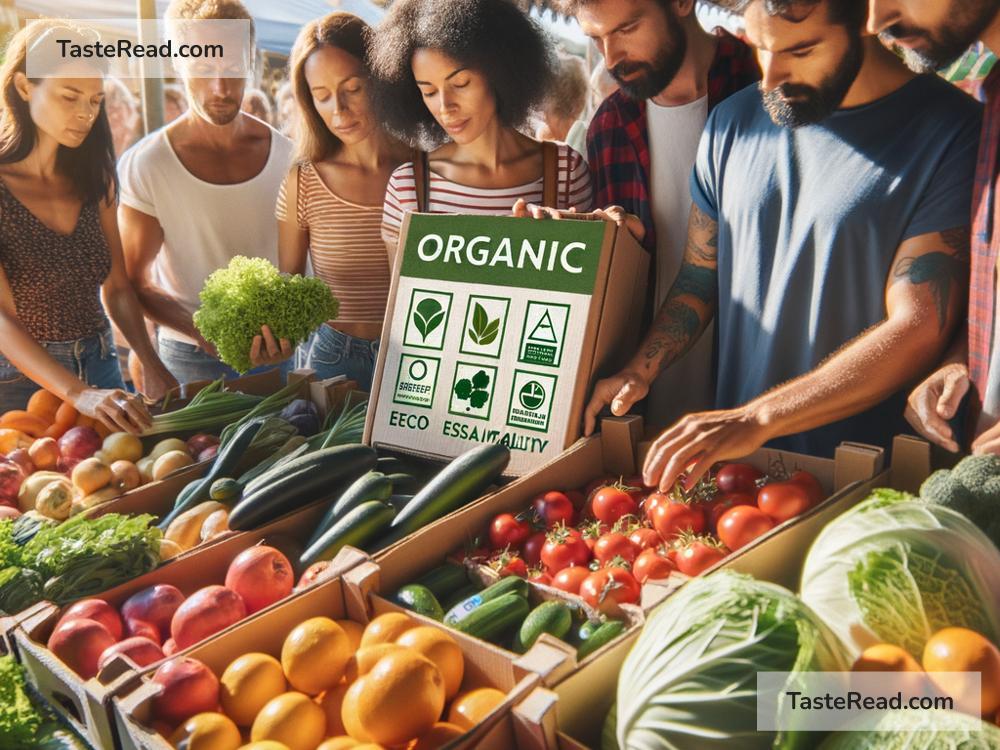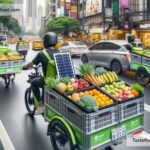The Future of Eco-Labeling in Food: A Greener Path Forward
In recent years, people have become more interested in how their food is grown, processed, and packaged. We are learning that our food choices not only affect our health but also impact the planet. Eco-labeling—labels on food products that tell us if they are environmentally friendly—is playing a big role in helping consumers make better choices for themselves and the Earth. But what is next for eco-labeling in food? And how will it evolve to meet the needs of a changing world? Let’s explore.
What is Eco-Labeling?
Eco-labeling is a system that provides consumers with information about the environmental impact of food products. These labels can highlight whether a product is organic, sustainably produced, fair trade, or carbon neutral. Essentially, eco-labels help people understand which foods have been made in ways that protect the environment, conserve resources, and support ethical practices.
Some common eco-labels include USDA Organic, Fairtrade, Rainforest Alliance Certified, and Non-GMO verified. These labels create transparency and empower consumers to choose foods that align with their values.
Why Eco-Labeling Matters
The rise of eco-labeling is directly tied to growing concerns about climate change, deforestation, water pollution, and other environmental issues. Agriculture and food production are major contributors to global greenhouse gas emissions. For example, producing meat requires vast amounts of water and releases large amounts of carbon dioxide into the atmosphere.
Eco-labels help address these environmental concerns by rewarding sustainable practices. When consumers buy eco-labeled food, they are supporting farmers and companies that care about the planet. Over time, this can drive real change, encouraging industries to adopt greener production methods.
Challenges with Current Eco-Labeling
While eco-labeling has many benefits, it’s not perfect. One of the biggest challenges is confusion. There are so many eco-labels on the market, and it can be hard to know what they all mean. For example, does “sustainably sourced” mean the same thing as “carbon neutral”? Not necessarily. Without clear and consistent standards, many consumers feel overwhelmed or unsure about which labels to trust.
Another challenge is accessibility. Eco-labeled food products are often more expensive than conventional options. This can make it difficult for people on tight budgets to buy environmentally friendly foods, even if they want to.
Lastly, there’s the issue of greenwashing—when companies use eco-labels or marketing terms that falsely suggest they are environmentally friendly. This can mislead consumers and undermine trust in genuine eco-labeling efforts.
The Future of Eco-Labeling
Despite these challenges, the future of eco-labeling in food looks bright. With technology advancing and sustainability becoming a global priority, there are many exciting possibilities for eco-labeling to improve and expand.
1. Standardized and Simplified Labels
One promising trend is the push for standardized eco-labeling systems. Governments, industry groups, and environmental organizations are working together to create unified guidelines. Standardized labels would make it easier for consumers to understand the environmental impact of their food choices. For example, a clear “Eco Score” system could rate products based on their carbon footprint, water usage, and ethical practices—all in one simple label.
2. Digital Tools and Transparency
Technology can also enhance eco-labeling. QR codes or apps could give consumers access to detailed information about a product’s sustainability. Imagine scanning a code on a loaf of bread and instantly seeing where the wheat was sourced, how much water was used, and whether the workers were paid fairly. This kind of transparency would help build trust while making eco-labeled products more accessible.
3. Affordability and Incentives
To make eco-labeled food accessible to everyone, governments and companies may need to step in with subsidies or incentives. For example, financial support for sustainable farmers could help lower the costs of eco-labeled products. Supermarkets could also promote eco-friendly food through discounts, loyalty programs, or special displays.
4. Wider Adoption by Food Brands
In the future, eco-labeling might become the norm rather than the exception. More food brands are recognizing that consumers care about sustainability, and they are starting to adopt eco-labels to attract customers. As demand for eco-labeled products grows, these practices could become mainstream, making sustainable food the default choice.
5. Innovative Metrics
As science improves, eco-labels could widen their scope. For example, future labels might not only show a product’s carbon footprint but also its impact on biodiversity, soil health, and even packaging waste. This deeper insight would allow consumers to consider the full picture when making decisions.
The Role of Consumers and Education
The success of eco-labeling depends heavily on consumers. People need to be educated about why eco-labeling matters and how to interpret the labels correctly. This means schools, governments, and companies need to work together to raise awareness about sustainable food choices. Educated consumers are more likely to demand and support eco-labeled products, driving further progress.
Conclusion
Eco-labeling in food has come a long way, but it’s clear that this is just the beginning. As consumers become more aware of environmental issues, the demand for transparency and sustainability in food production will continue to rise. By simplifying labels, using technology, improving affordability, and expanding their scope, eco-labeling has the potential to transform the food industry for the better.
The future of eco-labeling is not just about helping people make good choices—it’s about creating a food system that is healthier, fairer, and more environmentally friendly for everyone. As consumers, we hold a lot of power in shaping this future, one purchase at a time.
Let’s choose wisely, for ourselves and for the planet!


